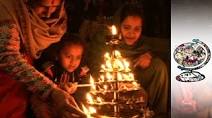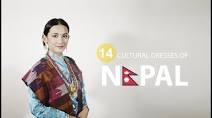Know more about Nepali Castes and its importance | Nepal Tourism

The ancient temple of Changu Narayan is located on a high hilltop that is also known as Changu or Dolagiri. The temple is surrounded by forest with champak trees and a small village, known as Changunarayan Village. The temple is located in Changu Narayan, VDC of Bhaktapur District, Nepal. This hill is about 8 miles east of Kathmandu and a few miles north of Bhaktapur. This temple is considered the oldest Hindu temple in Nepal still in use.
 |
| The two big stone elephants in the southern part of Changunarayan Temple. |
The village is surrounded by different castes/groups of people. First of all, many westerners do not understand what we mean by castes. You could think of castes as tribes or extended family rather than some sort of cultural/societal levels. Many westerners think it’s all about the Hindu caste system, but it is actually quite complex with this being only one part of it. For Americans, you can think of it like the way New York City functions. You have the five burrows with each of these made up primarily of a particular heritage. People are so proud of their heritage they want to keep that identity pure by marrying within their community. Of course it’s more rigid and there are many more social norms to consider.
 |
| This is the picture of typical Tamang village in Changunarayan. |
There are different small villages of different groups of people surrounding Changu. The temple area is surrounded by the Newar with their own culture and tradition. The village in the southern part is the Tamang village, where the majority are Tamang and Lama. Most of them are Hindu but they have a different culture than the other castes. The other northern village and eastern village is the combined group of Brahmin, Chhetry. Magar, and other castes’ people live in yet another village.
This UNESCO site is well worth seeing and well worth staying in awhile. If you are artistically inclined you can enjoy a thangka painting class or a wood carving class. They also have guides who can take you on a cultural trek for around $5. Even though it’s still in the Kathmandu Valley, it's like stepping back in time and the people are really genuinely friendly.
Changunarayan is also well above the pollution line of Kathmandu and there is usually a nice, gentle breeze blowing. It's the middle of June at noon and the temperature is 25.6 with 55% humidity. I'm sure that's much different than Kathmandu, just 20 Km. away.
People also ask
Web results
Ethnic groups in Nepal are a product of both the colonial and state-building eras of Nepal. The groups are delineated using language, ethnic identity or the caste ...
Nov 5, 2012 - Social structure of the caste system in Nepal today. Based on words from Prithvi Narayan (founder of the Shah dynasty) there are 4 Varnas (main ...
Guided Search Filters
Web results
In the 2001 Census around 81 percent of. Nepalese reported their religion as Hindu, thus locating themselves within the caste system. But for the most part over ...
Aug 16, 2013 - The Nepali caste system is largely similar to that of India. There are four principle castes: the highest is Brahmin, then Chhetri, the Royal Families caste, then Baise, and finally Sudra, the lowest caste colloquially known as the "untouchables".
Identity in Nepal is heavily centred on a combination of religion, ethnicity and caste. After Nepal's unification, the 1854 “Muluki Ain” civil code assigned every ...
by M Subedi - 2010 - Cited by 56 - Related articles
Caste is not today what it was before 1950; and it has not become completely class or replica of it in Nepal. KEY WORDS: INTRODUCTION. Social stratification is ...Videos
Web results
Nepalese are known by castes A caste is an elaborate and complex social system that combines elements of occupation, endogamy, culture, social class, tribe ...
Related searches


















